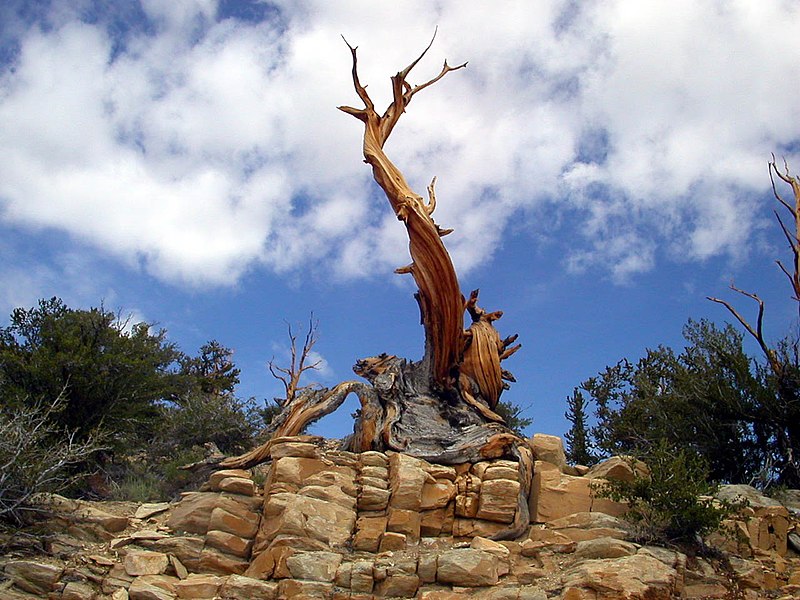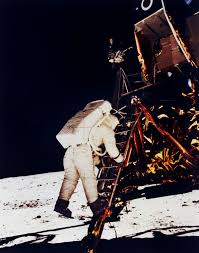Geotripper has started a geology-oriented 100 things meme. Thing's I've done are in bold. Follow along and keep score for yourself.
1. See an erupting volcano.
2. See a glacier. [More glaciers in the North Cascades than you can shake a stick at. The Winthrop Glacier on the north side of Mt. Rainier is IMHO the most dramatic with a huge, yawning mouth at its base that belches out a massive sub-glacial river. Falling rocks echo across the valley. Geology in action that is just jaw dropping.]
3. See an active geyser such as those in Yellowstone, New Zealand or the type locality of Iceland.
4. Visit the Cretaceous/Tertiary (KT) Boundary. Possible locations include Gubbio, Italy, Stevns Klint, Denmark, the Red Deer River Valley near Drumheller, Alberta.
5. Observe (from a safe distance) a river whose discharge is above bankful stage. [Nooksack River, WA]
6. Explore a limestone cave. Try Carlsbad Caverns in New Mexico, Lehman Caves in Great Basin National Park, or the caves of Kentucky or TAG (Tennessee, Alabama, and Georgia).
7. Tour an open pit mine, such as those in Butte, Montana, Bingham Canyon, Utah, Summitville, Colorado, Globe or Morenci, Arizona, or Chuquicamata, Chile. [The Mesquite Gold Mine in southern California. A pit large enough to see from space. Also the biggest Tonka trucks I've ever seen.]
8. Explore a subsurface mine. [At a tourmaline mine in southern California I saw a gem pocket being cleaned out with gorgeous watermelon tourmalines. Drool soaked my shirt through.]
9. See an ophiolite, such as the ophiolite complex in Oman or the Troodos complex on the Island Cyprus (if on a budget, try the Coast Ranges or Klamath Mountains of California). [The ophiolites in the San Juan Islands of Washington are a great low budget alternative too if you can't cobble together the bus fare to Oman.]
10. An anorthosite complex, such as those in Labrador, the Adirondacks, and Niger (there's some anorthosite in southern California too).
11. A slot canyon. Many of these amazing canyons are less than 3 feet wide and over 100 feet deep. They reside on the Colorado Plateau. Among the best are Antelope Canyon, Brimstone Canyon, Spooky Gulch and the Round Valley Draw. [Box Canyon on the south side of Mt Rainier is spectacular.]
12. Varves, whether you see the type section in Sweden or examples elsewhere. [Some glaciolacustrine varves in Island County, WA].
13. An exfoliation dome, such as those in the Sierra Nevada [I climbed the 5-pitch "Central Pillar of Frenzy" on Cathedral Spire across from El Cap.]
14. A layered igneous intrusion, such as the Stillwater complex in Montana or the Skaergaard Complex in Eastern Greenland.
15. Coastlines along the leading and trailing edge of a tectonic plate (check out The Dynamic Earth - The Story of Plate Tectonics - an excellent website). [I live on the leading edge of the North American Plate as it overrides the Juan de Fuca plate]
16. A gingko tree, which is the lone survivor of an ancient group of softwoods that covered much of the Northern Hemisphere in the Mesozoic. [The new Art and Children's Museum in Bellingham has a Gingko tree. Yeahh!]
17. Living and fossilized stromatolites (Glacier National Park is a great place to see fossil stromatolites, while Shark Bay in Australia is the place to see living ones) [I've seen the fossilized variety, 1/2 credit.]
18. A field of glacial erratics. [Lots in the Sierra Nevada.]
19. A caldera [Massive caldera in Mammoth California, and Yellowstone for the "super volcano"].
20. A sand dune more than 200 feet high.
21. A fjord.
22. A recently formed fault scarp. [I worked on a survey crew as an undergrad, measuring displacements along active faults.]
23. A megabreccia.
24. An actively accreting river delta.
25. A natural bridge.
26. A large sinkhole.
27. A glacial outwash plain.
28. A sea stack.
29. A house-sized glacial erratic. [Sierra Nevada]
30. An underground lake or river.
31. The continental divide.
32. Fluorescent and phosphorescent minerals. [Not "in the wild" but plenty in my petrology/mineralogy classes.]
33. Petrified trees.
34. Lava tubes.
35. The Grand Canyon. [I'm ashamed I haven't been to the Grand Canyon. My good friend Gary has told me that I'm not worth my salt as a geologist until I see the GC. Sigh.]
36. Meteor Crater, Arizona, also known as the Barringer Crater, to see an impact crater on a scale that is comprehensible.
37. The Great Barrier Reef, northeastern Australia, to see the largest coral reef in the world.
38. The Bay of Fundy, New Brunswick and Nova Scotia, Canada, to see the highest tides in the world (up to 16m).
39. The Waterpocket Fold, Utah, to see well exposed folds on a massive scale. [1/2 credit again on this one. I haven't seen Waterpocket, but the folds of Poleta in the White Mountain Range are terrific.]
40. The Banded Iron Formation, Michigan, to better appreciate the air you breathe. [I haven't the BIF in place, but I have a terrific chunk sitting on my desk. It is a gorgeously laminated rock.]
41. The Snows of Kilimanjaro, Tanzania.
42. Lake Baikal, Siberia, to see the deepest lake in the world (1,620 m) with 20 percent of the Earth's fresh water.
43. Ayers Rock (known now by the Aboriginal name of Uluru), Australia. This inselberg of nearly vertical Precambrian strata is about 2.5 kilometers long and more than 350 meters high.
44. Devil's Tower, northeastern Wyoming, to see a classic example of columnar jointing.
45. The Alps.
46. Telescope Peak, in Death Valley National Park. From this spectacular summit you can look down onto the floor of Death Valley - 11,330 feet below.
47. The Li River, China, to see the fantastic tower karst that appears in much Chinese art.
48. The Dalmation Coast of Croatia, to see the original Karst.
49. The Gorge of Bhagirathi, one of the sacred headwaters of the Ganges, in the Indian Himalayas, where the river flows from an ice tunnel beneath the Gangatori Glacier into a deep gorge.
50. The Goosenecks of the San Juan River, Utah, an impressive series of entrenched meanders.
51. Shiprock, New Mexico, to see a large volcanic neck.
52. Land's End, Cornwall, Great Britain, for fractured granites that have feldspar crystals bigger than your fist.
53. Tierra del Fuego, Chile and Argentina, to see the Straights of Magellan and the southernmost tip of South America.
54. Mount St. Helens, Washington, to see the results of recent explosive volcanism. [With a bonus vial of ash my Grandma sent me after it erupted. See my post on "The Persistence of Life" about the recovery of Mount St. Helens.]
55. The Giant's Causeway and the Antrim Plateau, Northern Ireland, to see polygonally fractured basaltic flows.
56. The Great Rift Valley in Africa.
57. The Matterhorn, along the Swiss/Italian border, to see the classic "horn".
58. The Carolina Bays, along the Carolinian and Georgian coastal plain
59. The Mima Mounds near Olympia, Washington. [Kinda creepy when you see these. But I love the 'giant gopher' theory.]
60. Siccar Point, Berwickshire, Scotland, where James Hutton (the "father" of modern geology) observed the classic unconformity. [I've visited the equivalent contact on the Isle of Arran.]
61. The moving rocks of Racetrack Playa in Death Valley.
62. Yosemite Valley
63. Landscape Arch (or Delicate Arch) in Utah
64. The Burgess Shale in British Columbia
65. The Channeled Scablands of central Washington. [The story of J. Harlen Bretz is a must read for the scablands. I highly recommend "Bretz's Flood" for laymen and geologists alike.]
66. Bryce Canyon
67. Grand Prismatic Spring at Yellowstone
68. Monument Valley
69. The San Andreas fault [I would add the town of Parkfield as a must see for the SA fault]
70. The dinosaur footprints in La Rioja, Spain
71. The volcanic landscapes of the Canary Islands
72. The Pyrennees Mountains
73. The Lime Caves at Karamea on the West Coast of New Zealand
74. Denali (an orogeny in progress)
75. A catastrophic mass wasting event [The Hope Slide in southern British Columbia was an enormous event]
76. The giant crossbeds visible at Zion National Park
77. The black sand beaches in Hawaii (or the green sand-olivine beaches).
78. Barton Springs in Texas
79. Hells Canyon in Idaho
80. The Black Canyon of the Gunnison in Colorado
81. The Tunguska Impact site in Siberia
82. Feel an earthquake with a magnitude greater than 5.0. [I grew up in California. 'Nuff said.]
83. Find dinosaur footprints in situ.
84. Find a trilobite (or a dinosaur bone or any other fossil)
85. Find gold, however small the flake.
86. Find a meteorite fragment
87. Experience a volcanic ashfall
88. Experience a sandstorm [San Juaqin Valley, zero visibility on the freeway, dust filtering in the truck. Pretty scary.]
89. See a tsunami.
90. Witness a total solar eclipse.
91. Witness a tornado firsthand.
92. Witness a meteor storm, a term used to describe a particularly intense (1000+ per minute) meteor shower
93. View Saturn and its moons through a respectable telescope.
94. See the Aurora borealis, otherwise known as the northern lights. [In a rare event I saw the Aurora from Washington state in the late 1990's. Unusual for them to be visible so far south.]
95. View a great naked-eye comet, an opportunity which occurs only a few times per century. [Hale-Bopp in 1997]
96. See a lunar eclipse.
97. View a distant galaxy through a large telescope
98. Experience a hurricane.
99. See noctilucent clouds
100. See the green flash
I score a 43, not too shabby. I don't travel internationally enough to see some of these other gems.
I'd like to know where you score for this list. As an incentive to show off, I'll give you 2 bonus point for every 10 items you've seen on the list. Go on, do some bragging!
Also, I'm curious about what you think is missing. I'll add a few:
- A kimberlite pipe, not necessarily diamond-bearing. [I collected a sample of kimberlite from Kentucky. Not the friendliest place to go rock hounding. 'Nuff said.]
- Pegmatite insitu with "honkin' crystals"
- Turbidite sequences.
- Flint Ridge in Ohio, source of much of the Native American arrowheads east of the Mississippi.
- Soak in a natural hot spring.
- Sand boils from liquefied soils after an earthquake.
- Glacially striated rock outcrops.





















